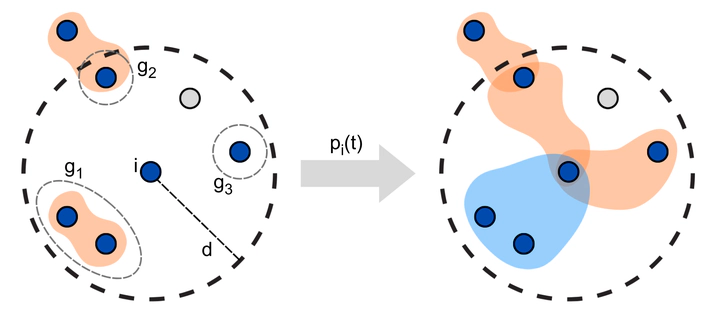
Abstract
The most fundamental social interactions among humans occur face to face. Their features have been extensively studied in recent years, owing to the availability of high-resolution data on individuals’ proximity. Mathematical models based on mobile agents have been crucial to understand the spatio-temporal organization of face-to-face interactions. However, these models focus on dyadic relationships only, failing to characterize interactions in larger groups of individuals. Here, we propose a model in which agents interact with each other by forming groups of different sizes. Each group has a degree of social attractiveness, based on which neighboring agents decide whether to join. Our framework reproduces different properties of groups in face-to-face interactions, including their distribution, the correlation in their number, and their persistence in time, which cannot be replicated by dyadic models. Furthermore, it captures homophilic patterns at the level of higher-order interactions, going beyond standard pairwise approaches. Our work sheds light on the higher-order mechanisms at the heart of human face-to-face interactions, paving the way for further investigation of how group dynamics at a microscopic scale affects social phenomena at a macroscopic scale.